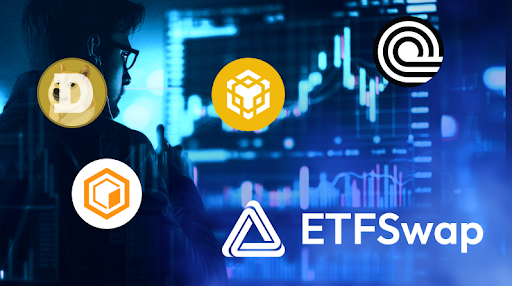
TerraUSD (UST) is an algorithmic stablecoin that’s pegged at $1.00. However, on the night of Could 19, it was buying and selling for $0.083.
This is not speculated to occur, after all, however final week UST, together with its affiliated coin Terra (LUNA), carried out a type of dying spiral that “wiped almost $50 billion of investor wealth in a number of quick days,” in accordance with NYDIG’s Could 13 publication.
The crash shook the crypto sector, but it surely additionally raised some questions: Is this a couple of single flawed undertaking or is it additionally about a complete class of cryptocurrencies — algorithmic stablecoins — which use an arbitration mechanism as a substitute of fiat reserves to maintain their market value steady ? That’s, are algo steady inherently unstable?
Additionally, how have final week’s occasions affected extra conventional stablecoins, like Tether (USDT), the business’s largest, however which additionally briefly misplaced its 1:1 peg to the US greenback? And, what about implications for the cryptocurrency and blockchain house usually — has it too been tarred by UST’s fall?
Lastly, what classes, if any, might be drawn from the week’s tumultuous occasions in order that this does not occur once more?
Can algo stables survive?
Because the mud settles, some are asking if the UST/LUNA flatlining spells the start of the tip for algorithmic stablecoins as a category. For the report: Some algo stables, together with UST, could also be partially collateralized, however algo stables rely primarily on market maker “arbitrage” exercise to keep up their $1.00 market value.
Pure algo stables, which put up no collateral in any respect, are “inherently fragile,” in accordance with Ryan Clements, assistant professor on the College of Calgary College of Regulation. They “depend on quite a few assumptions for operational stability, that are neither sure nor assured.” As he additional defined to Cointelegraph:
“Particularly, they require ongoing demand, keen market contributors to carry out arbitrage and dependable value info. None of those are sure and all of them have been tenuous throughout occasions of disaster or heightened volatility.”
For these causes, final week’s financial institution run on LUNA and UST and the following “dying spiral” that resulted might have been predicted, stated Clements, who certainly warned of one thing like this in an October 2021 paper printed within the Wake Forest Regulation Overview.
“Previous to the failure of UST, I argued that algorithmic stablecoins — these that aren’t absolutely collateralized — are primarily based purely on confidence and belief within the financial incentives of the stablecoin issuer’s underlying ecosystem. Consequently, there is nothing steady about them.”
“I do not see how algorithmic stablecoins can survive,” Yves Longchamp, head of analysis at SEBA Financial institution — a Swiss regulated digital property financial institution — instructed Cointelegraph. Final week’s drawdown within the stablecoin house confirmed that:
“Not all of them are created equal and that high quality issues. Comparatively clear, fully-collateralized fiat stablecoin USD Coin does higher than considerably opaque fully-collateralized fiat stablecoin Tether, which, in flip, does higher than partially collateralized, algorithmic stablecoin UST.”
Is extra collateral the reply?
Others, like Ganesh Viswanath-Natraj, assistant professor of finance at Warwick Enterprise College, agreed that algo stablecoins are “inherently fragile,” however solely insofar as they’re under-collateralized. They are often shored up by “greenback reserves or an equal in stablecoins on the blockchain. Alternatively, they’ll undertake a system of over-collateralization by sensible contracts.” The latter is how decentralized stablecoins like Dai (DAI) and Fei (FEI) work.
Kyle Samani, co-founder of Multicoin Capital, largely agreed. “The issue with UST wasn’t the algorithm, however the lack of collateral.”
“An algorithmic stablecoin could be very difficult,” Campbell Harvey, Duke College finance professor and co-author of DeFi and the Way forward for Finance, instructed Cointelegraph. “Each time you are under-collateralized, you run the chance of a so-called financial institution run.”
What was worse within the UST case is that it used an affiliated cryptocurrency, LUNA, to assist hold its value regular. LUNA was “extremely correlated with the destiny of UST,” stated Harvey, and when one started to sink, the opposite adopted, which drove the primary token’s value down much more, and so forth. He added:
“Does this imply will probably be tough to launch one other algorithmic stablecoin? Sure. Does this imply the concept disappears? I am unsure about that. I would by no means say by no means.”
What’s extra sure is that UST was utilizing a flawed mannequin, insufficiently stress-testing and missing in circuit breaking mechanisms to interrupt the autumn when the dying spiral started, stated Harvey.
Current: ‘DeFi in Europe has no foyer,’ says co-founder of Unstoppable Finance
Are algorithms steady even wanted?
One hears time and again that algorithmic stablecoins are a “fascinating” experiment with essential implications for the future of world finance. Certainly, a purely algorithmic stablecoin that sustains operational stability with out reserves is usually considered because the “holy grail” in decentralized finance (DeFi) growth, Clements instructed Cointelegraph, including:
“It is because, if it could possibly be attained, it might scale in a capital environment friendly method and nonetheless be ‘censorship resistant.’”
“We’d like a decentralized stablecoin,” Emin Gün Sirer, founder and CEO of Ava Labs, declared final week. “Fiat-backed stables are topic to authorized seizure and seize. A decentralized financial system wants a decentralized stablecoin whose backing retailer can’t be frozen or confiscated.”
Are stablecoins topic to seizure? “That is definitely true,” commented Samani, “but it surely hasn’t been a lot of an issue traditionally. Normally I feel most individuals overstate this threat.”
“I see the argument,” Todd Phillips, director of economic regulation and company governance on the Middle for American Progress and a former Federal Deposit Insurance coverage Company lawyer, instructed Cointelegraph.
What he cannot perceive, nevertheless, is how decentralized property get round this conundrum: Decentralized property are invariably extra risky than conventional property, and so to pledge that their property will maintain a steady worth — and never again them with steady property like US greenback however with different decentralized property, like LUNA, or an arbitration mechanism — is in the end simply asking for a UST-type situation.
Many have been deploring Terra and its “flawed” stablecoin mannequin final week, however possibly the notion of an algorithmic stablecoin in itself is not so outlandish, particularly if one takes a extra historic view of cash. Take a look at how the US greenback and different currencies developed when it comes to their backing or “reserves,” Alex McDougall, the president and COO of Stablecorp — a Canadian fintech agency, instructed Cointelegraph — additional explaining:
“Fiat currencies began out as ‘fully-backed,’ like by gold, silver, and many others, and developed into mainly algorithmic currencies with the central banks being the opaque algorithm underpinning and managing their worth.”
Penalties for crypto usually
In the long run, will the TerraUSD collapse have a long-lasting affect on the bigger cryptocurrency and blockchain world?
“It’ll assist formulate clear ideas on stablecoin design and the necessity for steady and liquid reserves to again the peg always,” stated Viswanath-Natraj. “For regulators, this is a chance to introduce guidelines on auditing and capital necessities for stablecoin issuers.”
Clements already sees some modifications within the stablecoin atmosphere. “In mild of Terra’s failure and the contagion that it prompted throughout crypto markets, demand has moved to totally or over-collateralized kinds.”
Stablecoins are largely a US phenomenon, however the UST crash might have implications in Europe, too, Oldrich Peslar, authorized counsel at Rockaway Blockchain Fund — a Swiss enterprise capital agency — instructed Cointelegraph. For instance:
“Within the EU, there is a dialogue about whether or not there needs to be an actual declare for redemption by regulation for all stablecoins, whether or not they need to all the time be backed at the least 1:1, and whether or not the issuance of stablecoins might be halted in the event that they develop too massive, and even whether or not the regulation ought to apply to decentralized stablecoins.”
“The UST saga,” Peslar continued, “might function a pretext for stricter regulation fairly than for a softer method.”
Longchamp predicted that “algorithmic stablecoins will likely be underneath strain and are unlikely to be a part of coming regulation” in Europe — which isn’t a great factor for algo stables as a result of in Europe, regulation is tantamount to acceptance. “My prediction can be that solely audited asset-backed stablecoins will likely be regulated and inspired.”
Final week’s occasions might even “chill” institutional and enterprise capital formation for stablecoin and DeFi tasks, at the least within the close to time period, suggests Clements. It’ll additionally seemingly hasten regulatory coverage formation within the US and internationally round all stablecoin kinds, “figuring out taxonomic kinds, and distinguishing operational fashions.” That is wanted as a result of algorithmic variations of stablecoins “are usually not steady and needs to be distinguished from the absolutely collateralized kinds.”
It could even discourage retail funding in crypto markets at giant “given the affect of the failure of Terra on the bigger market,” added Clements.
On the optimistic facet, Bitcoin (BTC), the oldest and largest cryptocurrency by market cap, typically considered as a bellwether for all the business, held up comparatively nicely final week. “Although the market collapsed and BTC misplaced most of its worth, its value has remained near $30,000, which is excessive,” stated Longchamp. “The worth provided by blockchain and crypto available in the market stays robust.”
Within the stablecoin sphere, efficiency was combined. “What was the affect on DAI? There was no affect,” stated Harvey, referencing the main decentralized stablecoin. “What was the affect on FEI, one other decentralized stablecoin? There was no affect. There was no affect as a result of these cash have been over-collateralized and have a number of mechanisms to verify the peg stays as shut as attainable to at least one greenback.”
“What occurred to USDC? Nothing,” continued Harvey, alluding to USD Coin (USDC), the centralized stablecoin with a 1:1 USD backing. However, what about Tether? Tether is a centralized stablecoin backed by fiat, however Tether is so opaque that we do not know what the collateral is.” The consequence: “Tether took a success” as a result of “folks stated, ‘Properly, possibly that is only a state of affairs much like UST.’” Its opaqueness was held towards it, he advised.
Tether, in its protection, claimed in a Could 19 assertion that “Tether has by no means as soon as didn’t honor a redemption request from any of its verified prospects.” And, on the reserves entrance, Tether stated it was decreasing its industrial paper investments, for which it has been criticized, and rising its US Treasury Invoice holdings.
Current: Indian authorities’s ‘blockchain not crypto’ stance highlights lack of expertise
Classes realized?
Lastly, what classes, if any, might be realized from the UST tumult? One can most likely assume that the “quest” for a pure algorithmic stablecoin will proceed amongst DeFi builders, Clements instructed Cointelegraph. However, it is necessary that or not it’s “carried out inside a regulatory atmosphere that has enough shopper and investor safeguards and disclosures.”
The final week has introduced us nearer to crypto regulation within the US, in accordance with Phillips, “at the least I hope so, as a result of we’d like regulation so traders do not get harm.” At a minimal, they need to be forewarned concerning the dangers.
Total, on condition that the crypto and blockchain business remains to be in early adolescence — solely 13 years outdated — periodic failures like UST/LUNA most likely needs to be anticipated, Harvey added, although “we hope the frequency and the magnitudes lower.”
A certain quantity of philosophical calm is likely to be so as too. “We’ve got to take the place that we’re 1% into this disruption utilizing decentralized finance and blockchain know-how, and will probably be a rocky journey,” stated Harvey, including:
“The issues that DeFi solves are very substantial. There’s numerous guarantees. However it’s early and there will likely be numerous iterations earlier than we get it proper.”











